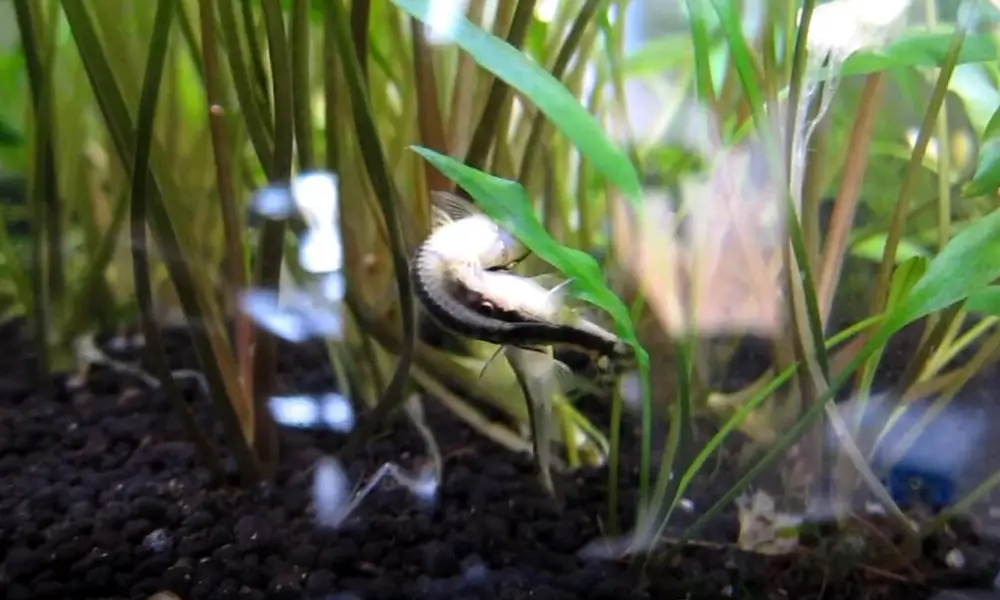Otocinclus is my favorite freshwater fish. A perfect member of the algae-eating team and clean-up crew, this fish is known for its pacific temperament and excellent cleaning skills. It can easily charm anybody at first glance, and I am no different.
I remember the day when I brought four little Otocinclus catfishes to my home, and now I have five. And the little one is damn cute!
You’ll get surprised to know that not many people have witnessed the actual spawning activity of the fish, and there are a few published accounts of having any otocinclus spawn.
Are you planning to make Otos your new family member? Keep scrolling below, and I will explain everything about otocinclus eggs, their appearance, and what breeding stages are involved in their development.
Do Otocinclus Lay Eggs?
Otocinclus catfish lays adhesive eggs in a small cluster of 3-6 eggs. The average spawning will have 30 to 60 eggs, and Otos usually hatch in 2 to 3 days at 75F. These egg clusters are typically found on plant surfaces and rocks around the tank.
Unlike many other loricariids that males will build nests and guard the eggs, most species in the genus Otocinclus just lay their eggs, and both parents will not protect their eggs.
What do Oto Catfish Eggs Look Like?

Otocinclus eggs are very small, round, and vary from transparent to cream to yellow-green. You can see the veins inside the egg, and the center is filled with a small number of fluids.
Otocinclus Breeding (From Eggs to Adult)
Even though otocinclus are easy to maintain, these fishes are highly challenging when it comes to breeding. Otos live in shoals or schools, and you should have a breeding group of at least 5.
Unless you have an established fry tank, don’t put them in a new breeding tank. A breeding net with good flow is necessary for a community tank.
[amazon box=”B07M7H2BK2″]You need to set the proper tank conditions and put the male and female otocinclus together to get the mating done. Slightly raising the temperature can help accelerate their metabolism and promote spawning.
Like the Corydoras species, these fish are known for their playful mating rituals. The chase game will go on for a while before the male catches up with the female to start mating. The female will swim away, and the male will search for her until she is found; then, he will lie on top of her.

When it’s time for mating, the female will turn to the nearest male and aggressively pound his ventral fin. Both fish form a “T” position. The male will then release sperm during the process, which the female will catch in her mouth. She will remain to hold herself with pelvic fins and lays a few eggs.
The female will clean a spot on the glass, plant leaves, heater, or filter and deposit her eggs. Sometimes, you will see the eggs all across the aquarium. After that, the female will rest for a brief period of time.
If the fertilization comes out to be successful, the hatching should follow suit, and the eggs will hatch after 48 hours.
Otocinclus fries are incredibly small when they are firstborn. In fact, they are so small that they must spend their first few days of life feeding on their egg sacs. After they have absorbed all of the nutrients from their egg sacs, they are ready to swim around.
These fries typically stick to the sides of breeding nets, but they may also be found on leaves or swimming near the surface of the water. They should be fed protozoan organisms. You can provide them with baby brine shrimp or microworms 3 times daily as they grow.
How Do You Know If Otocinclus Are Breeding?
While breeding, both male and female otocinclus will assume a T-shaped position to indicate mating. The female otocinclus release her eggs using the ventral fins.
Behavior
Otocinclus spawn much like Corydoras species. The couple forms a T position, with a female pointing its snout towards the male otocinclus anal fin. The male fish usually remains curled while mating, and the female tends to be straight.
If we talk about the pre-spawning behavior, you will see both male and female otocinclus fishes running up and down, chasing each other, mainly in high currents of the tank.
Appearance
Ottos are cylindrical with caudal fins. According to studies, this charming catfish becomes mature at 1-inch or 25mm. However, in some cases, the first sexual maturity can happen at 20.1 mm for males and 18.7mm for females.
FAQs:
How Long Do Otocinclus Eggs Take to Hatch?
Otocinclus hatch in 2 to 3 days at 75-degree F.
How Many Eggs Does Otocinclus Have?
Ottocinclus lay in the cluster of 3-6 eggs. The average spawning will have 30 to 60 eggs.
How to Care for Otocinclus Eggs?
It’s best to use a breeder net or box to temporarily hold their tiny eggs. Some fish may eat Otocinclus eggs.
Will Otocinclus Eat Their Eggs?
No, but they also don’t care much about their eggs, and they don’t show any parental care towards them.
What to Feed Otocinclus Fry?
You can feed them baby brine shrimp or microworms 3 times daily.
Final Thoughts
So, that’s all about otocinclus eggs. I hope you’ve found the guide interesting and informative. Otocinclus are extremely friendly and reputed for their peaceful and calm nature. While they are easy to maintain, breeding these little fishes is a considerable challenge.
If you have any questions or want to share your experience with Otocinclus breeding, feel free to leave a comment below.
